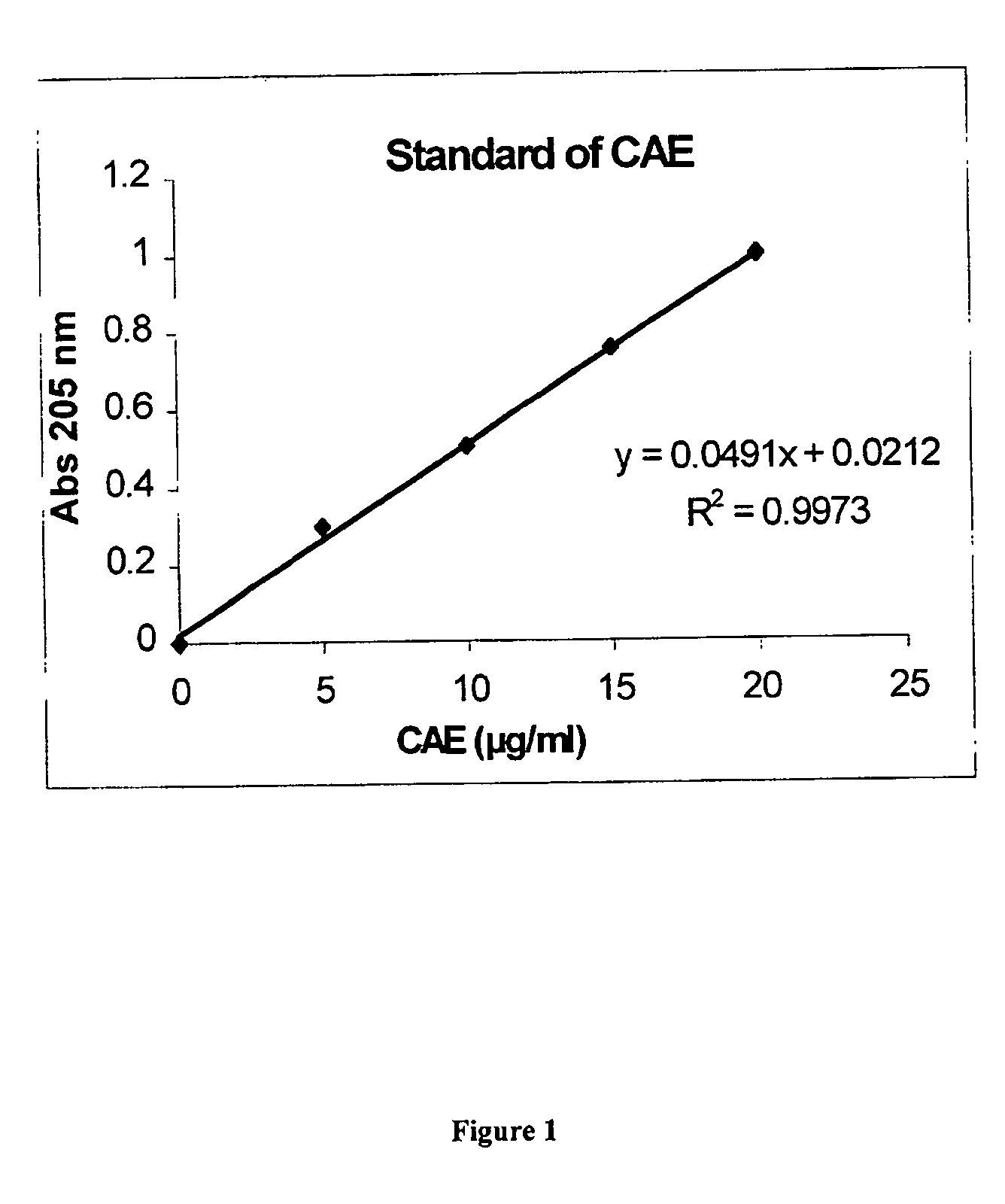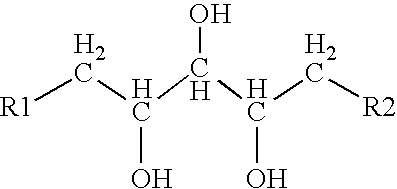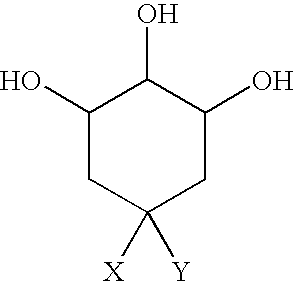Method of preparation and composition of a water soluble extract of the bioactive component of the plant species Uncaria for enhancing immune, anti-inflammatory, anti-tumor and DNA repair processes of warm blooded animals
a bioactive component and warm blooded animal technology, applied in the field of isolate, purification and structural identification of the bioactive component of water extracts, can solve problems such as aging curtailed, and achieve the effects of enhancing the immune competency of a mammal, inhibiting tnf- production, and enhancing the immune capacity of the mammal
- Summary
- Abstract
- Description
- Claims
- Application Information
AI Technical Summary
Benefits of technology
Problems solved by technology
Method used
Image
Examples
example 1
[0020] Isolation and purification of the bioactive component of the Pero extract. The method of preparation and the composition of the Pero extract, preferably C-MED-100®, are described in the Pero patents which are incorporated herein by reference. C-MED-100®, a preferred embodiment of the Pero extract, is a hot water extraction of Cat's Claw (Uncaria tomentosa) carried out for 18-24 hours at 90-100° C. and ultra-filtrated to remove compounds greater than 10,000 molecular weight as previously described in the Pero patents. C-MED-100® is further prepared for the commercial market by spray drying the extract with corn starch (Niro F-10 Spray-Drier). Procedures are currently used to purify the active components of C-MED-100® as CAEs and it is understood that these procedures would apply to any Pero extract. The procedures are:
[0021] 1. C-MED-100® work-up for active ingredient estimation: The CAEs in C-MED-100® have very unusual water solubility. They tend to bind to tannin and polysa...
example 2
[0039] Analytical identification of the active ingredient of C-MED-100® as quinic acid. The bioactive component (sample approximately 1 mg) isolated by TLC is completely dissolved in about 0.7 ml D2O for NMR with no shift reagent added. The following spectra are recorded:
NMR 020108ta−1: 1H−2: 1H / 1H-correlated spectra; COSY−3: 1H / 13C-correlated spectra; HMBC.−4: 13C-Dept135.−5: 1H / 13C-correlated spectra; HMQ
[0040] The 1H-spectrum contains signals from a main compound. The three 1H-signals at 4.03, 3.90 and 3.43 ppm are found to be signals from methine-groups (see HMQC). Furthermore, the obtained 13C-signals at 66.9 B 75.1 correlate to these protons, and their chemical shifts imply that the carbons are bound to oxygen, possibly as CHOH-groups. The three signals are bound to each other in a straight chain as found in the COSY spectrum.
[0041] The main compound also showed 1H-signals at about 1.72 B 1.99 ppm with correlations to 13C-signals at about 40 ppm. The HMQC spectrum reveals t...
example 3
[0049] This example exploits the biochemical knowledge presented in examples 1 and 2 to determine that the active component of C-MED-100® is in fact quinic acid lactone. C-MED-100®&, quinic acid and quinic acid lactone all absorb to charcoal, and when they did both the biological activity and UV abso rptio n at 200 μm of C-MED-100® was also removed. This data teaches that the bioactive component of C-MED-100® absorbs maximally at 200 nm. The TLC results report that there are only 2 components of C-MED-100® having such an absorption maxima. The components, located at Rf=0.05 and Rf=0.3, when chromatographed in 1% ammonia in ethanol, correspond to quinic acid and quinic acid lactone, respectively.
[0050] However, upon evaluation, the bioactive properties of the bioactive component of C-MED-100® could bet almost completely accounted for by quinic acid lactone. As a result, the anti-aging, anti-inflammatory, immune and DNA repair enhancing and anti-tumor properties of C-MED-100® are due...
PUM
 Login to View More
Login to View More Abstract
Description
Claims
Application Information
 Login to View More
Login to View More - R&D
- Intellectual Property
- Life Sciences
- Materials
- Tech Scout
- Unparalleled Data Quality
- Higher Quality Content
- 60% Fewer Hallucinations
Browse by: Latest US Patents, China's latest patents, Technical Efficacy Thesaurus, Application Domain, Technology Topic, Popular Technical Reports.
© 2025 PatSnap. All rights reserved.Legal|Privacy policy|Modern Slavery Act Transparency Statement|Sitemap|About US| Contact US: help@patsnap.com



